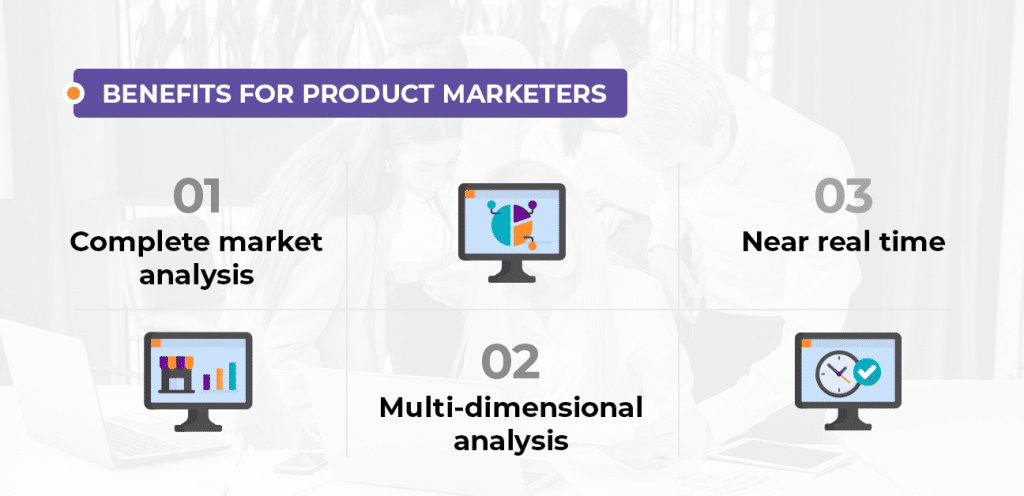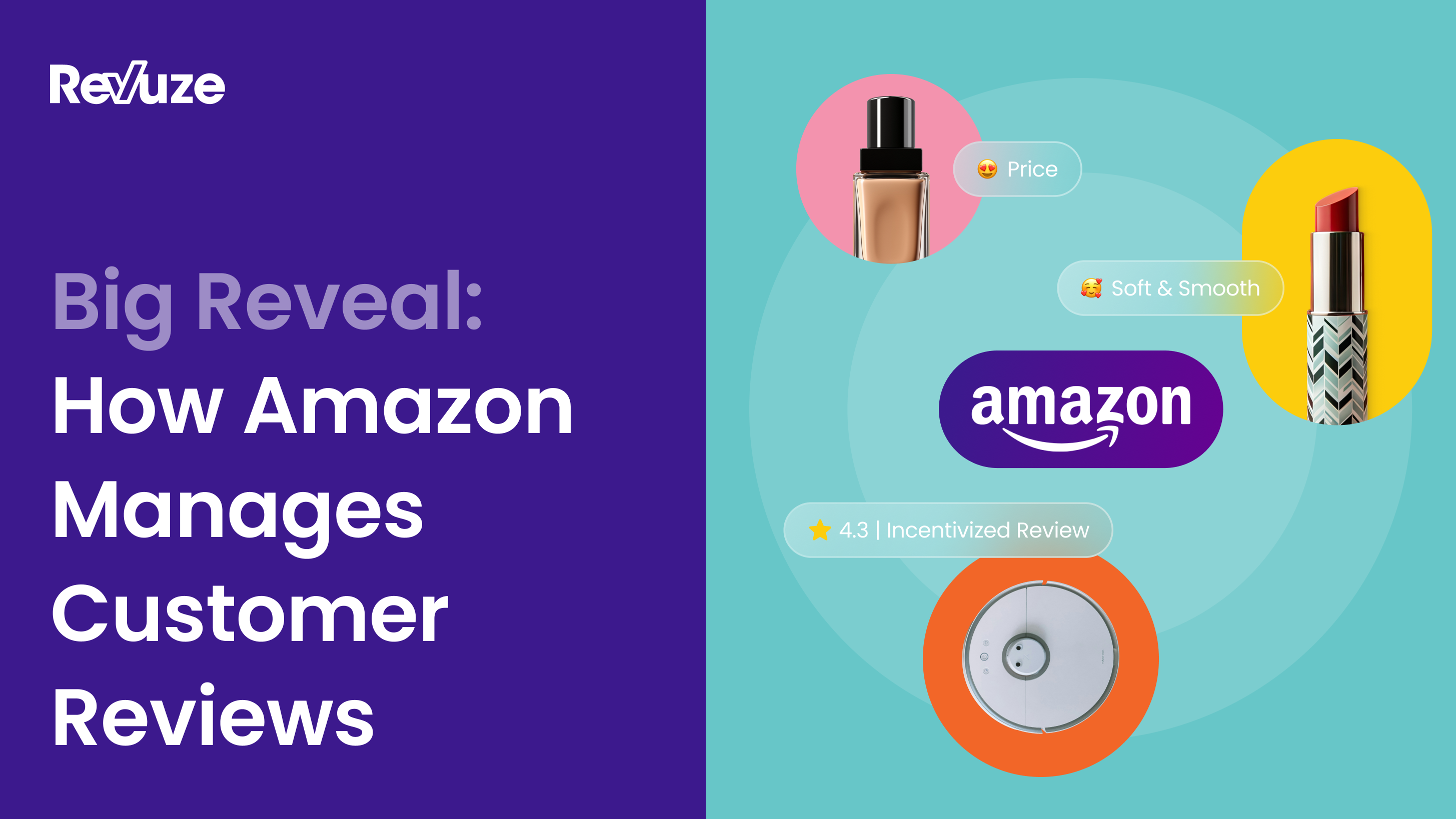
Understanding unstructured data is becoming more and more critical, as due to several different drivers, unstructured customer opinions and feedback is growing at a scary pace. In fact per IDG it is growing at a rate of 62% per year and IDG predicts that by 2022, 93% of all data will be unstructured.
Unstructured Data
With so much data out there from customers, how can anyone afford to ignore it?
What is Product Marketing?
You’d expect it to be well defined but Product Marketing is actually somewhat fluid and varies between organizations. Just try Google-ing Product Marketing and you’ll see. What makes it so difficult is that it bridges multiple domains – product, marketing as well as sales.
At its core it’s all about knowing the target customer and learning more about them to improve sales, product and marketing efficiency for these customers.
It typically includes activities such as:
- Product Research: Markets are more and more competitive. Gone are the days where large companies were monopolies. The goal here is to research the market well to identify competitors, new trends, wants and be able to leverage this information for your own new products. For this product marketers can leverage different feedback channels like call centers and chats, as well as market research tools like VOC analysis, CX Management solutions etc.
- Product Content: Product marketers need to create the positioning of their products. To support this and to support the customer buying journey product marketers may create things like blog content, case studies, Web pages, brochures etc. – all dedicated to describing the product
- New Product Launches: With a good understanding of the market, the next step is to see what is the evolution of your product that the market wants and to support it with a product launch plan. Once the product is launched, tracking the launch and making sure the product is well received is critical. According to Harvard Business School about 95 percent of new consumer products fail. See our post on “5 steps to acing your durable goods launch”
- Industry Engagement: This is an ongoing activity with the goal of generating buzz and supporting the marketing department need for quality buzz generating content. This typically includes working with partners, customers, influencers etc.
- Sales Tools: With most products the sales team is constantly needing more tailored content around the product for specific use cases, new types of customers or even new media types for old content
What you can find in Unstructured Data
With so many customer feedback channels and the growth of unstructured data, there is a huge opportunity today for brands to understand their customers and markets at scale and respond quickly to issues. Just a few years back understanding markets was heavily relying on manual research that was slow and not always wide enough, and brands used to take months if not years to recover from mistakes. A failed product launch could literally continue to fail for 6 months till the brand figured just parts of it out and started to correct course.
These days there is no shortage of data, but it’s more complex – it’s unstructured data. Unstructured means there is no specific pattern to the data. Examples of structured data could be an address, name or credit card numbers that have a well-known pattern and are easy to be recognized by technology.
Unstructured data examples are calls into the service center, online reviews, social media mentions and open-ended survey questions. None of these have a well-defined structure. Each can be of variable length, around different topics etc.
There’s a huge opportunity to mine this data to gain deep insights into the things that are top of mind to your customers.
Typically, you can expect to find these insights in unstructured data:
- Wide range of granular topics discussed (What is said about our products/services?). Typical topic areas are:
- Product/service feedback (“Like the coffee in this place”, “Love the screen of this phone”)
- Shopping experience (“Not in stock”, “Easy online purchase”)
- Customer service experience (“Returns processing”, “Customer support”, “Warranty”)
- Brand perception (“Loyalty”, “Value for money”)
- Sentiment analysis (What customers like and what they don’t like?)
- Emerging trends (New likes/dislikes, new competitors, new features?)
There are several types of solutions that mine unstructured data. The ones that are more detailed in nature are called Voice of the Customer (VOC) or Customer Experience (CX) analytics. For a deeper perspective on what makes such solutions more actionable, see a recent post titled “The 3 capabilities of an actionable CX analytics solution”.
Benefits for Product Marketers
As you can see there is a lot of valuable information in unstructured data. Another key benefit here is that these insights are delivered by technology in speeds that were not available before. When you connect the type of insights to the speed of insights, a product marketer can gain from VOC and CX analytics systems:
- Complete market analysis: Deep brand portfolio insights, competitor portfolio insights, brand level insights
- Multi-dimensional analysis: Product, customer service, shopping, brand level
- Near real time
Considering the product marketer typical activities, you can easily draw the line between the above insights and successful market research, product content and sales tools, product launch lifecycle and industry engagement.

Conclusion
Voice of the Customer and CX solutions are allowing a product marketer to harness the power of unstructured data to their benefit. With these solutions the feedback loop is cut short by a magnitude, from months to days. Which is eventually going to give you the long-term edge of winning your market with better product, service, sales, marketing and purchase experiences.
The growth of unstructured data quantities is good news as the data now exist for the product marketer to leverage it, and the tools to turn this data into insights exist as well. Revuze is an innovative software vendor that addresses just this with the first self-training, low touch Voice of the Customer solution that can mine customer data automatically and serve back insights. Reach out to find out more here.
 All
Articles
All
Articles Email
Analytics
Email
Analytics








 Agencies
Insights
Agencies
Insights